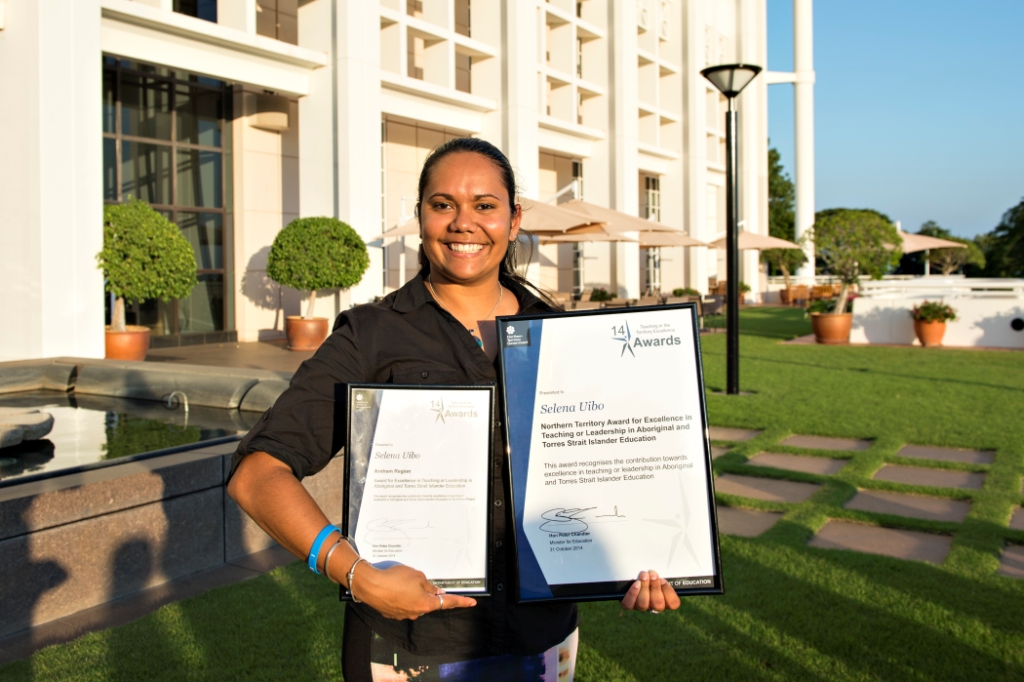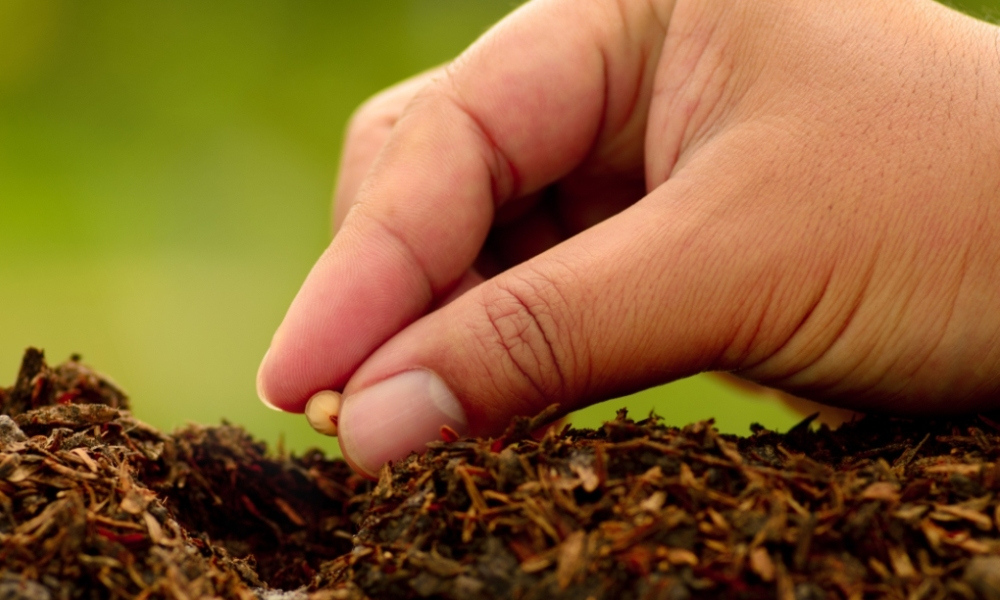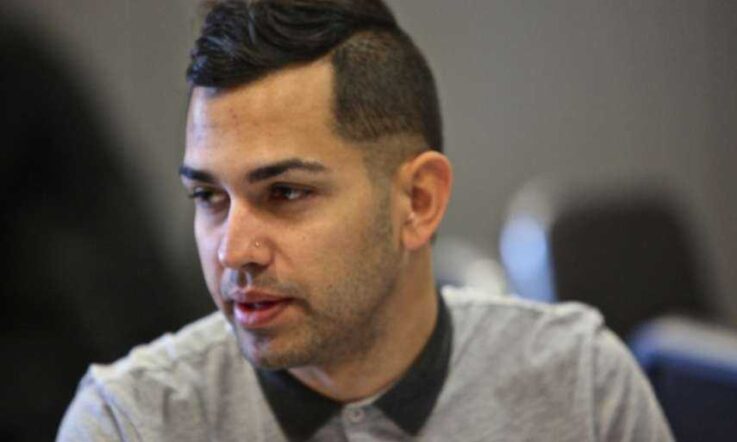Initiatives aimed at improving attendance and retention rates in a remote Northern Territory Indigenous community school have paved the way for an unprecedented rise in students interested in pursuing tertiary education and career pathways.
Behind the push is a young Indigenous teacher dedicated to creating change through education in her community.
Selena Uibo is a senior class teacher at the Numbulwar School in Arnhem Land, around 600 kilometres from Darwin.
Like most remote Indigenous schools, attendance and retention rates have always been an issue at Numbulwar. According to Australian Bureau of Statistics data (ABS, 2014), in 2013 the national apparent retention rate for Aboriginal and Torres Strait Islander students from Year 7/8 to Year 12 was 55.1 per cent. That figure was up from 39.1 per cent in 2003, but still 27.8 percentage points behind the equivalent 2013 national rate for all other students.
However, recent practical initiatives have seen Numbulwar become the highest performing school in terms of attendance rates for the Arnhem region. Year 10 to 12 enrolment figures have also jumped from four students in 2014 to 12 this year.
Initiatives include taking students on interstate and international trips, and teaching them hands-on business and leadership skills.
As well as preparing youngsters for work-ready pathways and showing them that they all have the potential to expand their career horizons, the activities also build self-esteem and self-worth, Uibo explains.
‘There is more than a focus on just getting the student to school,' she tells Teacher. ‘While this is important, our interstate trips and work-ready programs really focus on showing students the career and employment opportunities available to them once they have successfully completed secondary schooling.
'It exposes the students to opportunities to aim for post-school studies or career opportunities outside of the community. … This has been incredibly motivating for them.'
The educator adds that improved attendance rates at schools in remote Indigenous settings can be partly attributed to community and family support, as well as consistency in teaching and routines.
'What we have implemented at Numbulwar has come about from a desire to see more students graduate and get meaningful jobs out of school. Leaving school with business skills makes the students more employable at higher levels.
'I'd love to see our school graduates in managerial positions in the town. At the moment, these jobs are mostly filled by non-Indigenous or non-local people. There's also not a lot of work opportunities within the community itself and, if a job becomes available, it tends to go to an adult rather than a school-leaver.'
She adds students in remote Indigenous settings also face more barriers to completing schooling than those in regional or urban settings. ‘I see lots of determined and talented students with a high level of ability, but cultural and family commitments can make it hard.'
Language is another barrier, with English being the second or third language for 99 per cent of Numbulwar's students. ‘These barriers definitely contribute to kids leaving school and just staying in the community,' Uibo says. ‘Numbulwar is a very close-knit community, and it can be tough for young adults to go away and leave their family. Leaving a remote area also makes it harder to get home for ceremonial duties.
‘Change is also a very hard thing for young people who may have not left their community before. If you grow up in a city or are brought up within the Western culture, [something] such as going to university is an option that is more readily available. For remote students, it is more than likely something that they have probably never even thought about.'
Post-secondary options
Interstate and international trips are practical and hands-on experiences that allow the students to experience the options available to them once they have successfully completed their schooling. They are available to students who follow the school's Code of Conduct, have a good or improved attendance rate, have a good attitude and respect for learning, and who have tried hard.
The most recent trip involved taking a group of middle school students to Brisbane and the Gold Coast, which combined ‘fun rewards with educational and cultural experiences'.
‘Fun activities such as learning how to surf, visiting theme and wildlife parks, and going shopping were a rewarding aspect of the trip,' Uibo explains.
These ‘rewards' were also targeted to build the students' confidence.
‘Small things like buying their lunch was a really big deal for them. Growing up and living in a close-knit community means having the confidence to interact with people in a big city can be really difficult. It's a reason why so many people may not want to leave home.'
The students also visited other schools as part of a cultural exchange, and attended the University of Queensland's Brisbane campus, where they were given information about tertiary pathways and options and met with members of the university's Indigenous Students Unit. This alone was enough to get them thinking about life after school.
‘It plants the seed and gives them confidence that they can do this,' Uibo reflects. ‘It gives context to the outside world.'
School-based enterprises
The second initiative involved setting up school-based enterprises, which Uibo hopes will contribute to a long-term solution that provides students with practical employment skills, develops their numeracy and language skills, and contributes to job creation within the community.
As part of this approach, the school has set up an arts and craft store and an op shop. Both businesses are integrated into subjects by the NT Open Education Centre, allowing senior students to gain credit towards their NT Certificate of Education and Training.
‘We call the op shop the Second Chance Op Shop,' Uibo says. ‘It originally began as a way for us to fundraise for the school trips. Then we began selling items to the community ... and in the last six months it has grown into a store where community members can shop locally, and spend their money locally, with that money going back into the school. The students see this, and see the benefits that sustainable employment can provide.'
The arts and craft store also provides an outlet for local artists and community members to sell their artwork. Under Uibo's leadership, the students run the store themselves and are in charge of everything, from pricing and displaying items to handling money and interacting with customers.
‘It combines practical and theoretical aspects of learning, while also providing them with on-the-job training and allowing them to learn real-life skills, such as interacting with visitors from outside of the community.
‘Essentially, it really does show the students that they can do a job, and they can earn money from it.'
It's the successful implementation of initiatives such as these that led to Uibo being awarded the Northern Territory Award for Excellence in Teaching or Leadership in Aboriginal and Torres Strait Islander Education for her region and overall in the category for 2014.

Image: Selena Uibo.
References
Australian Bureau of Statistics (2014). 4221.0 – Schools, Australia, 2013. Retrieved from: http://www.abs.gov.au
What are the attendance and retention rates in your school for Indigenous and non-Indigenous students?
What opportunities do your students have to experience post-secondary pathways and careers?



